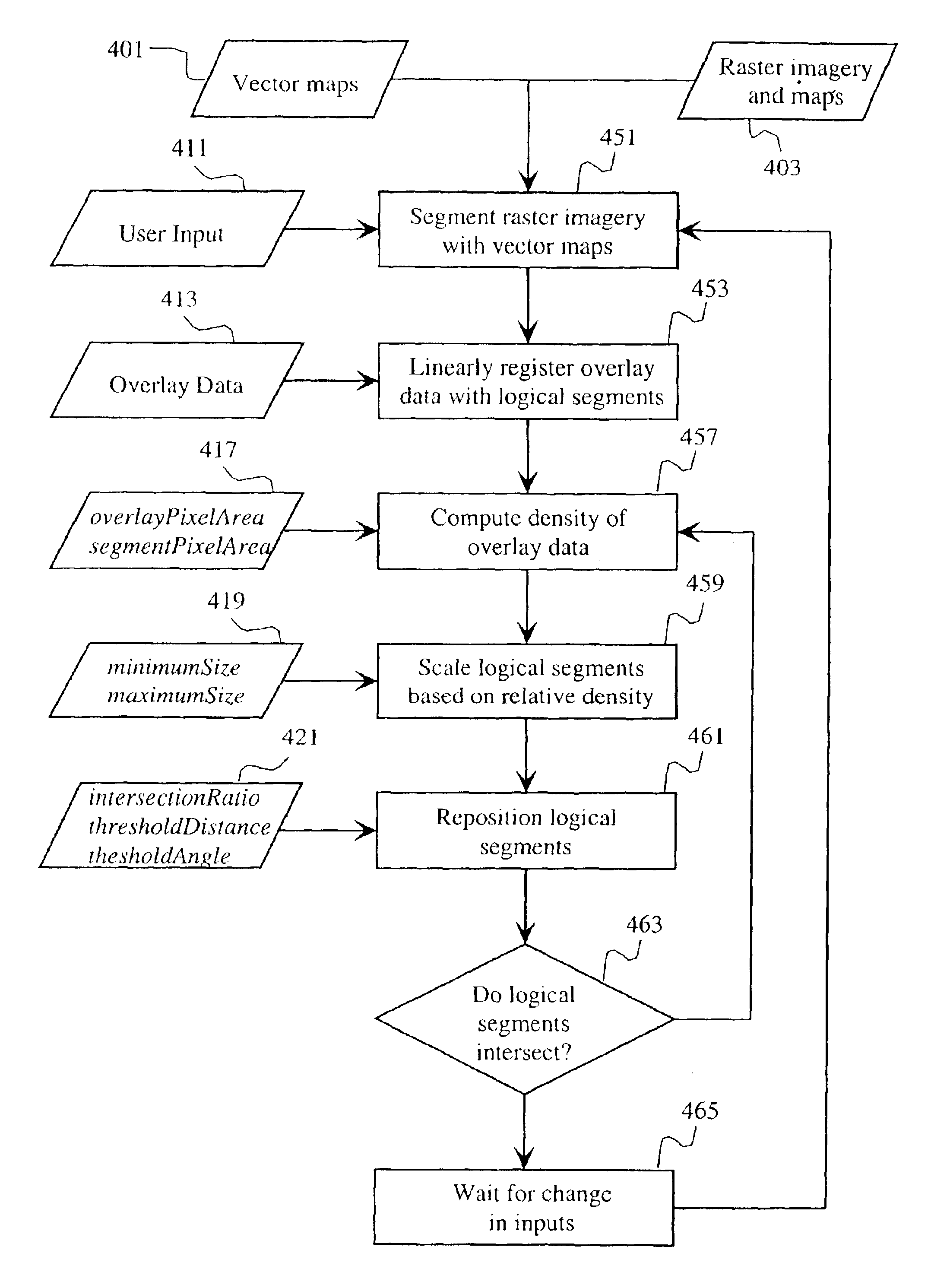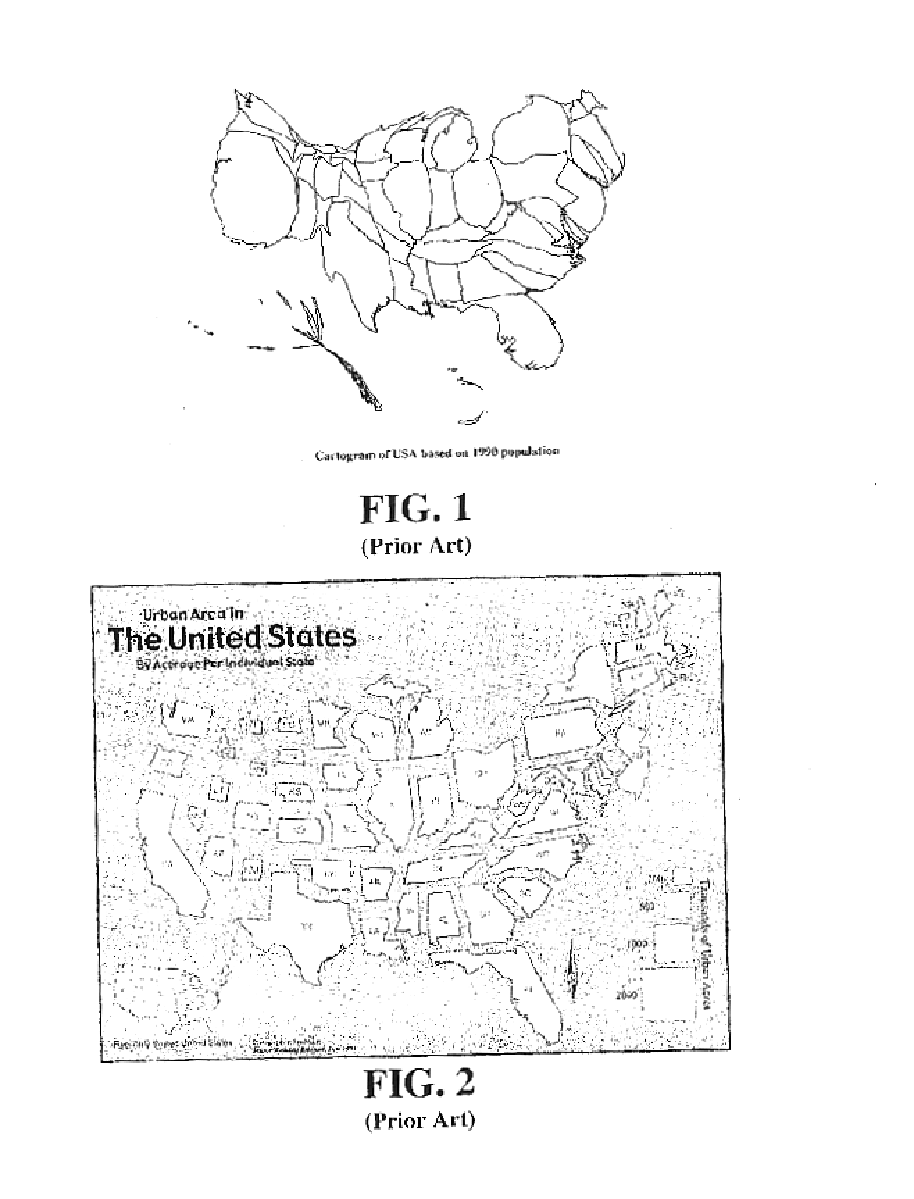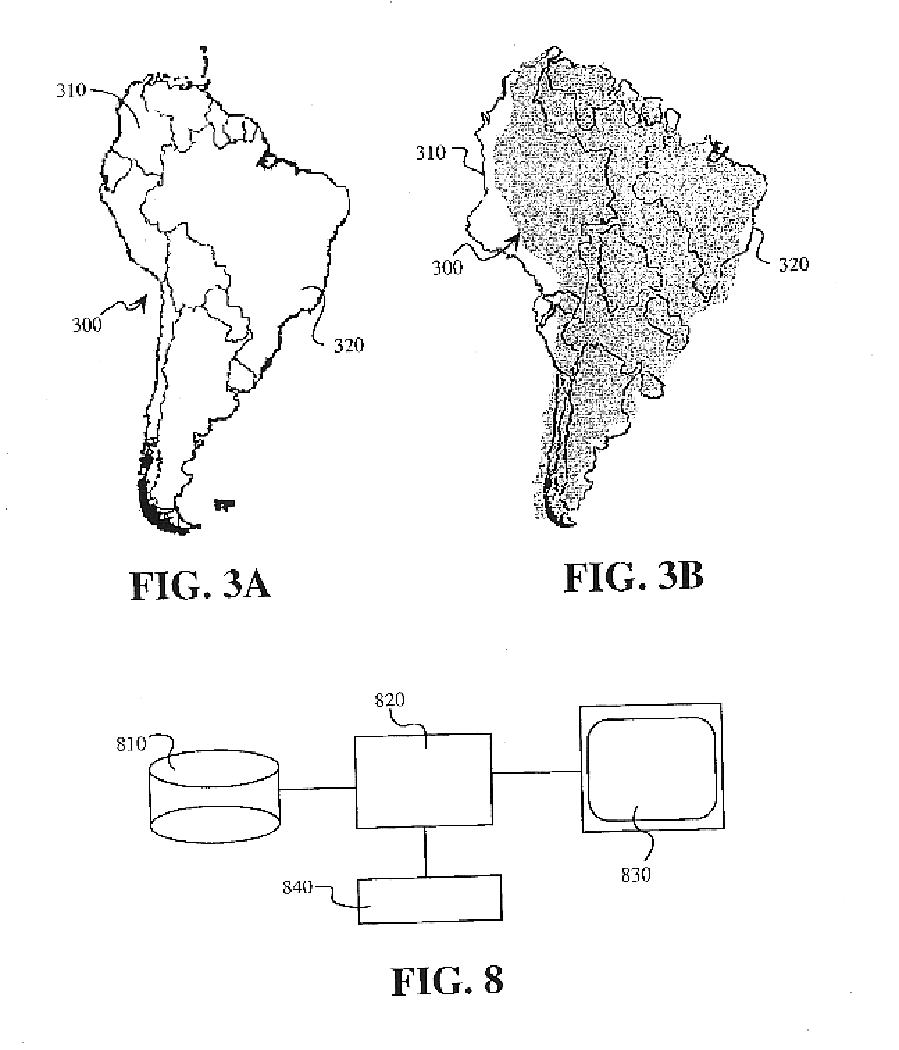Method and apparatus for geographic shape preservation for identification
a technology of geographic shape and identification method, applied in image enhancement, navigation instruments, instruments, etc., can solve the problems of loss or under-highlighting of other data variables, difficult presentation of very small regions and data associated with those small regions, and difficulty in presenting small regions and data, so as to enhance the analyst's view of data, enhance the understanding of displayed data, and increase the space available for display
- Summary
- Abstract
- Description
- Claims
- Application Information
AI Technical Summary
Benefits of technology
Problems solved by technology
Method used
Image
Examples
Embodiment Construction
Traditionally, cartographers produce maps by projecting the polar coordinates of the Earth into a two or three-dimensional Cartesian representation, as indicated by the equation below:
GeographicData→Projection(σ,ω,r)→map(x,y)
These projections are static and have few constraining factors that affect the resultant map. A common constraining factor is a minimum and maximum latitude and longitude that has the effect of limiting the region represented in the map to a country, state, or city. There is always a scale applied to the projection, making it a manageable size, such as 1:125000 or 1:500000.
Embodiments of the present invention introduce a supplemental transformation to the projection described above. The new transformation incorporates additional factors into the generation of a map, such as information density within bounded regions of the map. This enables regions to be transformed independent of each other. The transformation used by embodiments of the present invention may be...
PUM
 Login to View More
Login to View More Abstract
Description
Claims
Application Information
 Login to View More
Login to View More - R&D
- Intellectual Property
- Life Sciences
- Materials
- Tech Scout
- Unparalleled Data Quality
- Higher Quality Content
- 60% Fewer Hallucinations
Browse by: Latest US Patents, China's latest patents, Technical Efficacy Thesaurus, Application Domain, Technology Topic, Popular Technical Reports.
© 2025 PatSnap. All rights reserved.Legal|Privacy policy|Modern Slavery Act Transparency Statement|Sitemap|About US| Contact US: help@patsnap.com



